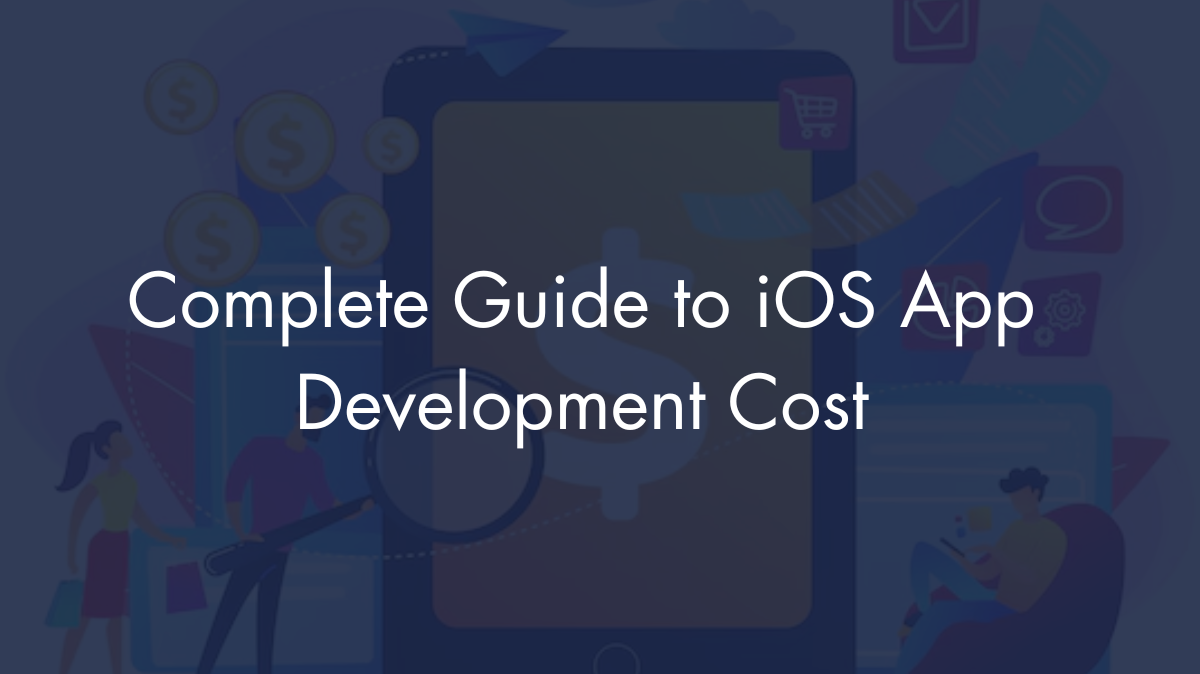In the constantly changing landscape of mobile app development, iOS apps stand out for their popularity and revenue potential, but every app has its cost level. If you are an entrepreneur, business, & CEO seeking to create an iOS app, you need to understand the cost of it.
Every stage faces different costs, from concept to execution. The factors affecting the price of developing an iOS app will be broken down in this guide, along with advice on how to navigate this complex market effectively.
What is iOS App Development?
The process of developing apps just for Apple’s iOS platform which runs devices like the iPhone, iPad, and iPod Touch is known as iOS app development.
Developers utilize Apple’s Xcode integrated development environment (IDE) and programming languages like Swift or Objective-C to design, create, and launch these applications. Developing an iOS app includes many phases, including planning, UI/UX design, coding, testing, and App Store publication.
Let’s see the key factors that affect ios app creation cost,
Factors Impacting the Cost of Developing iOS Apps
Developing an iOS app involves numerous variables that impact the overall cost. Here’s a closer look at the key factors.
-
App Complexity
Development expenses are closely associated with the complexity of your system, including its features, capabilities, and intricate user interface.
-
Design Requirements
Although custom UI/UX design boosts costs, it improves user experience. Pre-made templates or simpler designs may be more economical choices.
-
Development Approach
While native iOS development in Swift or Objective-C may initially cost more, they offer better performance and seamless compatibility with Apple products.
However, hybrid development that makes use of frameworks like Flutter or React Native might save expenses at the cost of speed.
-
Features and Functionality
The difficulty and cost of development increase with each new feature added, such as push notifications, in-app payments, user authentication, and third-party connections.
-
Backend Infrastructure
You need to budget for backend development and upkeep if your application needs API connectors, managing databases, or server-side logic.
-
Testing and Quality Assurance
Thorough testing on an array of devices and conditions guarantees a bug-free system, but it also costs more money.
-
Maintenance and Updates
It is necessary to make plans for ongoing expenses like post-launch, continuous maintenance, issue updates, upgrades for new iOS version compatibility, and feature improvements.
-
Geographic Location of Development Team
Geographical location, level of experience, and demand are some of the factors that affect developer fees globally. A cost-effective approach could involve exporting to regions with fewer labor expenses.
Read more here about ios app development cost factors:
https://blog.venturemagazine.net/ios-app-development-cost-2024-90bd74b5e8e4?gi=a04dfa67b30f
Estimating iOS App Development Costs
Determining the cost for the creation of iOS app development costs involves considering factors. Here you can explore,
-
Project Scope and Requirements
Define your project scope and requirements clearly to receive accurate cost estimates from development agencies or freelancers.
-
Fixed Price vs. Hourly Rates
Decide whether a fixed-price contract or an hourly rate model suits your project better. Fixed-price contracts offer cost predictability, while hourly rates provide flexibility for project adjustments.
-
Breakdown of Costs
Seek a detailed breakdown of costs, including design, development, testing, backend services, and ongoing maintenance. Understanding cost allocations helps in prioritizing features and managing the budget effectively.
-
Budget Contingency
Allocate a contingency budget for unforeseen expenses or scope changes. A contingency of 10-20% of the total budget is recommended to cushion against unexpected costs.
-
Comparative Analysis
Obtain quotes from multiple development providers and compare their offerings, expertise, and pricing structures before making a decision.
Estimating the cost of developing an iOS app is complex, typically ranging from $50,000 to $150,000 for a project. However, the final cost hinges on various factors such as customization level, chosen features, and project intricacy, making precise figures dependent on detailed project specifications. Get in touch with the iOS app development team to get the project consultation.
iPhone App Development Cost Optimization Strategies
Maximize efficiency and minimize expenses with strategic iPhone app development cost optimization techniques. Achieve optimal performance while staying within budget constraints.
-
Prioritize Essential Features
Focus on developing core features that align with your app’s primary objectives. Additional features can be implemented in future updates based on user feedback and market demand.
-
Agile Development
Adopt an agile development approach to iteratively build and refine your app. Breaking down the project into smaller sprints allows for better cost control and flexibility in responding to changes.
-
Reuse Existing Components
Utilize open-source libraries, frameworks, and third-party APIs to reduce development time and costs. Reusing code components across projects or platforms can significantly improve efficiency.
-
Minimum Viable Product
Develop a minimum viable product with basic features to validate your app concept and gather user feedback. This approach minimizes initial investment while providing valuable insights for future iterations.
-
Continuous Optimization
Monitor app performance, user feedback, and market trends to identify areas for optimization. Regular updates and refinements ensure long-term success and help in maximizing ROI.
Conclusion
Navigating the landscape of iOS app development costs requires careful planning, foresight, and strategic decision-making.
By understanding the factors influencing costs, estimating expenses accurately, and implementing cost optimization strategies, you can develop a high-quality iOS app within your budget constraints.
Remember, investing in thorough research, selecting the right development partners, and prioritizing user experience are key to achieving success in the competitive world of mobile apps.


